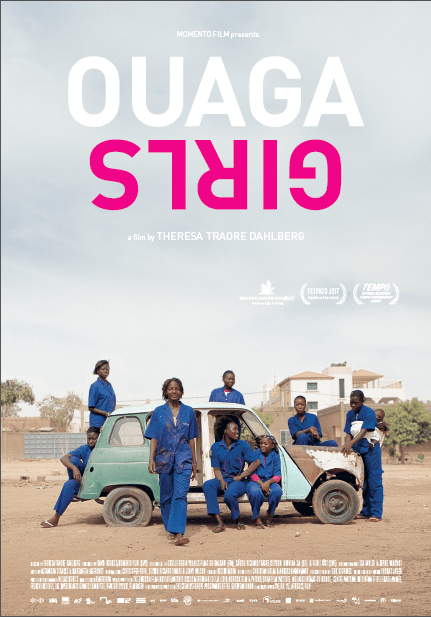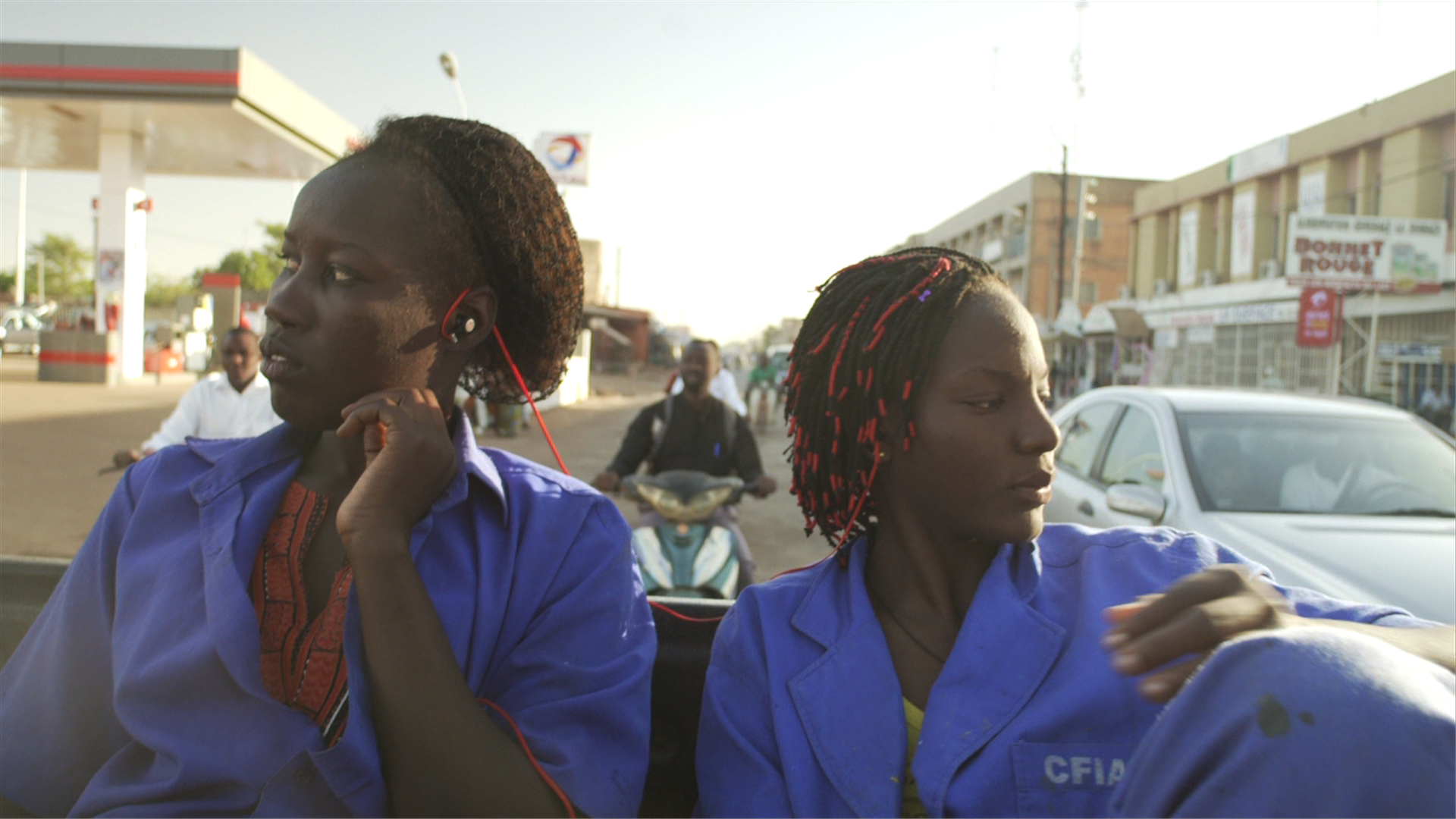Against the constant humming of motorbike engines in the pastel grey skies of the Sahel-Sahara, a group of young women seek out opportunities in the midst of a breeze of political change. Ouaga Girls by director, Theresa Traore Dahlberg shows a cross-sectional view of the lives of young women in Burkina Faso. The 83min documentary released in 2017 looks beyond the traditional roles of Chantal, Bintou, Rose and Dina who are in their final year in a vocational school, training to become auto mechanics, a profession largely reserved for men. However, this gender barrier does not deter the determined girls becoming women, as they juggle their studies and responsibilities with the angst of transitioning from girls to women.

In African cinema, we rarely see coming-of-age stories attempt to expose any sort of nuance in the ordinary lives of women. Their characters are more often than not tailored to suit a specific one-dimensional schema we might have of transitioning women. However, in Ouaga Girls, Theresa Traore Dahlberg emphasises their freedom, even in the midst of uncertainty. Majority of the scenes in the film show the girls merely existing, not trying to prove that they are strong enough to have a career in a male dominated field, but simply doing the work they need to do to survive their near bleak economic situations .
The film unfolds the nature of each of the girls in the group through the mechanism of a female psychologist who is introduced in the very first frame. Each of them surrenders themselves to her and unveils their ambitions, fears, joys and troubles. It is quite an interesting decision to use a psychologist rather than a traditional interview with the filmmakers as it highlights the importance of mental health as a major facet of coming of age. Encouraged by the warmth and comfort of sisterhood, they open up to the psychologist and that is how the audience also gets in touch with them. The role of the psychologist also mirrors the precarious uncertainty of their future by never responding to their replies, just probing them with question after question, just as life does to them.

The film is set in Burkina Faso right after the fall of the 27 year-old Blasie Campoare regime. The social and political context is intelligently unveiled through radio chatter, billboards, phone conversations and other transient moments. You feel the refreshing breeze billowing through the Land of Upright Men, yet for the women, there is no enthusiasm about the election. Life goes on for the girls with a silent resignation that not much will change for them. Although their school was established by the initiatives of Thomas Sankara who worked to uplift women, they do not actively believe in much coming their way from the new government.
Ouaga Girls uses cinéma vérité or a fly on the wall perspective to narrate the stories of the youth of Burkina Faso. The camera attempts to be stealthy as it accompanies the girls from their tedious workshop assignments of priming dead cars for new lives through coats of paint during the day to dancing at music concerts and bars at night. Initially, each scenes feels disconnected from the next with the filmmaker relying on the natural flow of events than some sort of guided narrative to thread the plot together. Also, in an attempt to present a near complete image of youth, Ouaga Girls misses the chance to portray depth of character. The interactions with the girls on screen among themselves and their conversations with the psychologist unveil just the surface of their personalities. In this way, the documentary comes off as flat and expository rather with a nuanced and balance.

The camera’s presence is clearly felt as the subjects of the film do not appear to be comfortable on screen. The audience can’t tell if the girl are acting out roles of being honest on screen because they appear to hold back with laboured dialogue and avoiding eye contact. Nevertheless, Ouaga Girls in no way tries to over dramatize the lives of the girls and tells it as it is, without interfering or making judgments. The film is also quite similar to Ayanda the Mechanic, another coming of age film also about a young woman choosing a career in auto mechanics. However, with Ayanda the Mechanic being a feature film, there is more creativity in the plot to dramatize the events yet portray a realistic picture.

Ouaga Girls provides a much need visual narrative of a country that rarely receives much publicity. Being Dalhberg, first full length documentary, the film opens up a perspective that has hardly been explored. The documentary shows the will power and resilience of these young women faced with so much uncertainty. They create their own opportunities and are unapologetically bold in demanding the lives they want for themselves.
—
Written by Hakeem Adam.
Photo Credit: Ouaga Girls website

